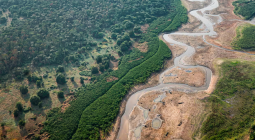Severe droughts are getting bigger, hotter, drier and longer
Droughts lasting multiple years are becoming more common and extreme around the globe, expanding by about 50,000 square kilometres annually
Severe droughts that persist for years have grown hotter, drier and larger since the 1980s. These long-lasting droughts – some of which are extreme enough to be classified as “megadroughts” – can be especially devastating to agriculture and ecosystems.
Rising temperatures linked to climate change have increased the risk of drought because warmer air can hold more moisture, boosting evaporation from the land. Combined with changing precipitation patterns that lead to less rain, this can exacerbate and lengthen periods of drought – as witnessed in the recent worst-in-a-millennium megadroughts in parts of North and South America.
Dirk Karger at the Swiss Federal Institute for Forest, Snow and Landscape Research and his colleagues identified more than 13,000 droughts that lasted at least two years between 1980 and 2018 to reveal long-term trends. They found that, since the 1980s, the most severe multi-year droughts have become even drier and hotter.
The droughts have also affected a larger part of the globe, with the area affected by the 500 most severe drought events underway in any given year expanding by about 50,000 square kilometres annually. “That’s an area bigger than Switzerland,” says Karger.
Satellite images of greenness in the areas affected by drought also showed some ecosystems became browner, indicating the drier conditions were having an effect. The most dramatic shift was in temperate grasslands, which are more sensitive to changes in water availability, while tropical and boreal forests showed a smaller response.
The researchers did not do a formal analysis to define how much human-caused climate change has contributed to the trend, but the patterns are consistent with what researchers expect to see with rising temperatures, says Benjamin Cook at Columbia University in New York, who was not involved with the research.
The work highlights how long-term drought can have consequences just as severe as climate disasters like destructive wildfires or powerful hurricanes, says Cook. “For both people and ecosystems, the cumulative impact of droughts is really what matters.”
Cover photo: Climate change can increase the frequency and severity of droughts. Zhang Yu/VCG via Getty Images



